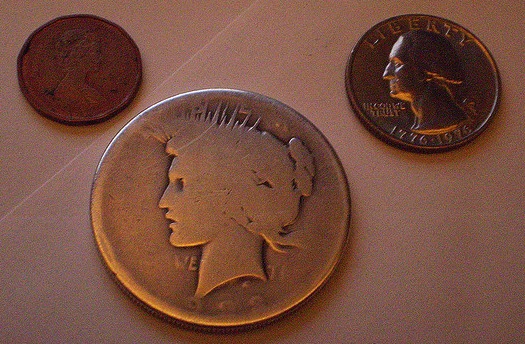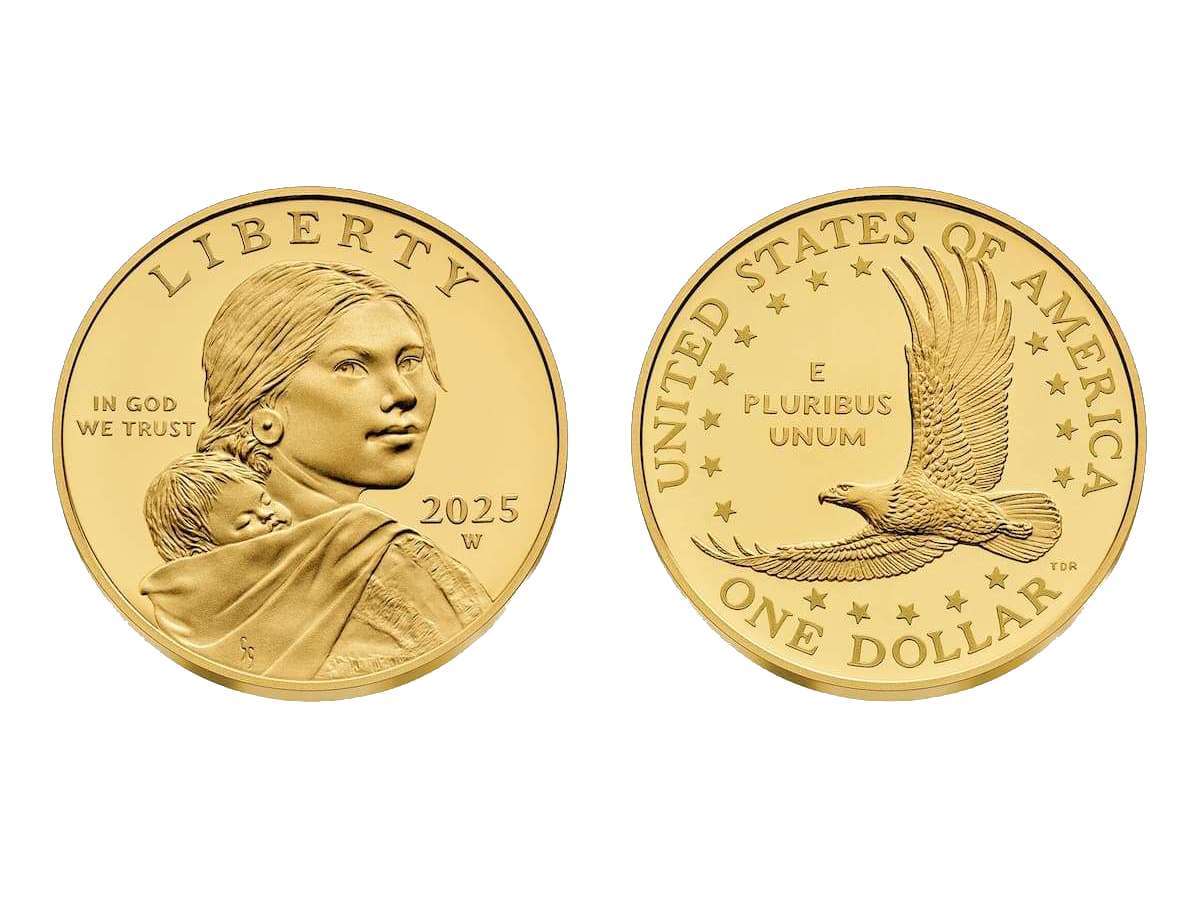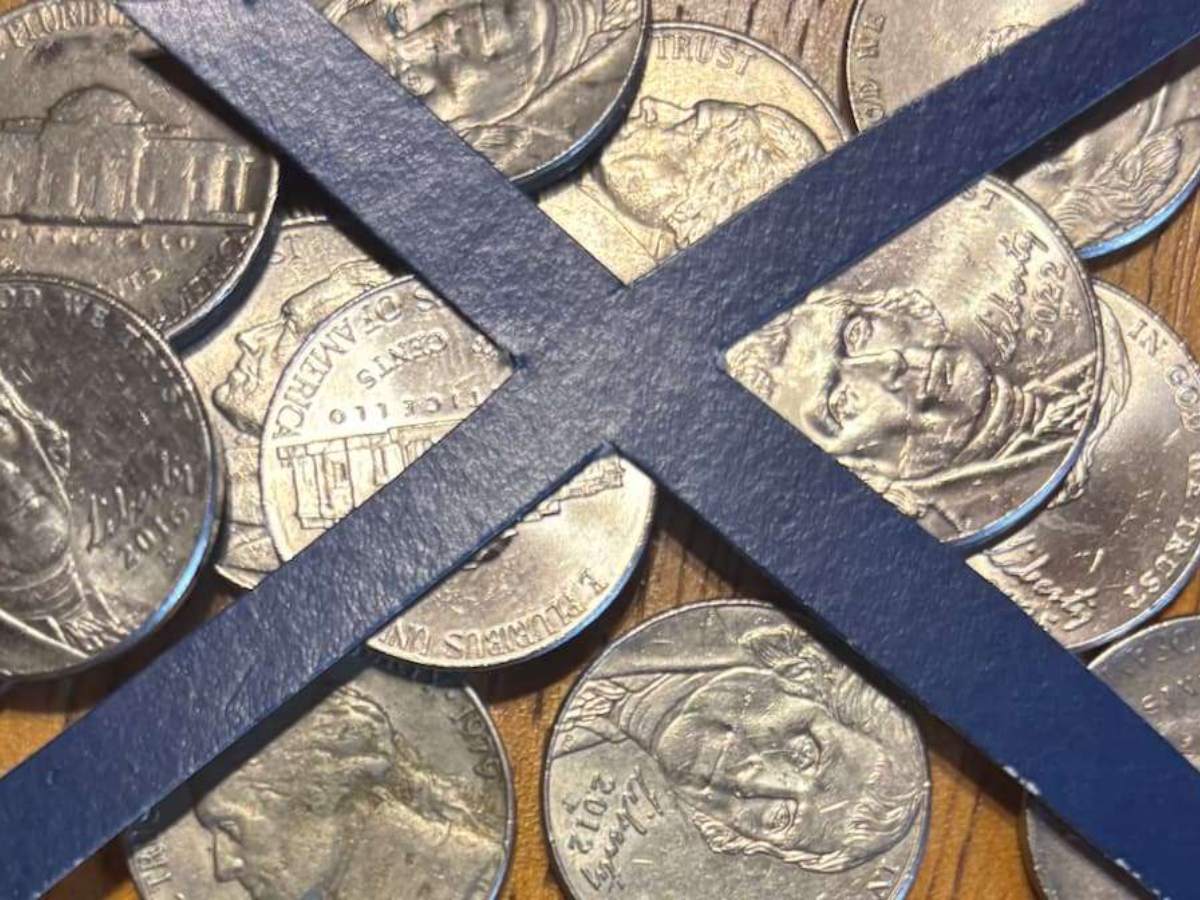Based on the questions I see in the comments, a lot of people have coins with no mintmark… or missing letters and numerals.
Rightfully, these collectors wonder if their coins are errors — and if they are, what they’re worth.
Determining whether a coin with no mintmark or other missing details is an error coin or not depends on evaluating the individual coin.
For example, some coins with no mintmark are indeed errors — while most others were never supposed to have a mintmark in the first place.
Likewise, there are many coins that have missing letters. In some cases, these are error coins — but sometimes it’s just a situation where the lettering was rubbed off by someone outside the mint, or it’s just a normal coin with heavy wear.
Hopefully, with the information in this article you’ll be able to more confidently determine if your coin with no mintmark or missing letters is:
- A normal coin
- An error coin
- A damaged coin
- Or something else entirely
Start here if your coin doesn’t have a mintmark…
There are some very rare no mintmark error coins that are also extremely valuable.
These are some of the most famous no-mintmark coins, along with their approximate value:
- 1922 plain no-D Lincoln penny — $500+
- 1968 no-S Roosevelt proof dime — $9,000+
- 1970 no-S Roosevelt proof dime — $500
- 1971 no-S Jefferson proof nickel — $900+s
- 1975 no-S Roosevelt proof dime — $450,000+
- 1983 no-S Roosevelt proof dime — $500+
- 1990 no-S Lincoln proof penny — $3,000+
Some think that any coins without mintmarks are error coins. However, most coins with no mintmark are actually from the Philadelphia Mint. The Philly Mint historically did not place mintmarks on its coins.
Also, from 1965 through 1967, no coins were given mintmarks at any U.S. Mint facility. This was done by the United States Mint to discourage collecting when there was a severe national coin shortage.
In the 1970s and ’80s, the West Point Mint struck pennies and quarters to help supplement production from the Philadelphia Mint. However, none of those coins made at the West Point Mint contain the “W” mintmark. Therefore, they are indistinguishable from coins made at the Philadelphia Mint.
A List Of Coins That Actually Don’t Have Mintmarks
The following is a list of coins that are not supposed to contain mintmarks:
- Coins struck at the Philadelphia Mint before 1941
- All Philly-minted coins dated 1942 through 1945 EXCEPT war nickels
- Any Philadelphia-minted coins made from 1946 through 1964
- All U.S. coins made from 1965 through 1967
- Philadelphia-minted coins made from 1968 through 1978
- Any Philadelphia-minted coins EXCEPT dollar coins made in 1979
- All Philadelphia-minted pennies struck before 2017
- Philadelphia-minted pennies struck 2019 or later
- West Point-minted pennies and quarters struck in the 1970s and 1980s (these look like the no-mintmark Philly coins)
Wait a minute… what about those no-S proof coins?
You are not going to find those in circulation! They only turn up in proof sets.
So, if you come across, say, a 1968 or 1975 Roosevelt dime without an “S” mintmark or 1990 pennies without a mintmark… unfortunately, what you’ve really found are just common Philadelphia-minted coins. These are worth face value, if worn. These are not no-S mint error coins.
Start here if your coin is missing some letters…
A lot of coins are missing a few letters, a numeral or two in the date, or even entire inscriptions!
Some of these are legit error coins, while others are simply showing signs of post-mint damage.
But how can you tell a mint-made error versus a coin that has been altered or damaged after it left the mint? Here’s how:
- If you see scratches, marks, or other forms of damage going into the coin’s surface around missing lettering, it’s likely that the missing design element was intentionally removed by somebody after the coin left the mint. Surface damage surrounding missing letters does not necessarily mean the coin was altered — but it’s most likely to be the case that the coin was manipulated with tools that damaged the surface, in the process of removing the lettering.
- Normally, a mint error involving a missing letter will show uninterrupted flow lines on and around the surface where the lettering is supposed to be. And, in many cases, an error involving a missing letter might still show traces of the lettering on the surface (visible only under magnification).
A List Of Error Coins With Missing Letters
There are a few types of errors in which lettering might be partially or fully obscured from the strike.
These are some of the situations in which coins that are missing some lettering are actually error coins:
Strikethrough Errors
A strike-through error coin is made when foreign matter (such as grease or a piece of fabric) gets in the lettering or date numerals of the die, which strikes the design onto the blank coin. Yep, that foreign matter actually creates an impression on the struck coin.
Many strike-through errors are visually stunning coins, and they are prized both for their scarcity as well as their novelty.
Grease strikethroughs are among the most common of all. A grease strike-through may present as heavy weakness in one area of lettering on a coin. Or it may altogether obliterate a letter or letters in an inscription. Modern pennies, nickels, dimes, and quarters with small grease strikethrough errors may bring an extra $1 to $2.
More acute types of strike-throughs, such as those involving thread, a piece of metal, or something similar, can bring much more money. Some dramatic struck-through coins are worth $100 or more!
Die-Adjustment Strike Errors
A die-adjustment strike signifies a coin that was struck by a die that was not properly adjusted to create a full strike.
These coins normally exhibit significantly weak designs — which means even uncirculated examples will show very flat designs, with little to no interior detail and weak lettering.
They are used to test the pressure and alignment of a die strike. These test pieces are generally not intended to circulate, but sometimes they escape the mint.
Die-adjustment strike error coins are quite scarce and desirable and are worth $50 or more.
Weak Strikes
A weak strike is a common error in which not enough force was used to strike the coin fully, resulting in poor details and partially or fully obscured lettering.
Weak strikes differ from die-adjustment strikes in that the former are struck by aging, worn dies. These are not numismatically desirable coins and are worth less than fully struck coins.
Very few weakly struck coins are worth more than their fully struck counterparts. The 1922 Weak D penny with no mintmark is perhaps the most notable example of a weakly struck coin selling for more than its well-struck counterpart. That’s because the 1922 Weak D roughly resembles the rare 1922 plain no-D penny. 1922 Weak D pennies are worth between $25 and $50 in well-worn condition.
Again, most weak strikes are not worth as much as similar fully struck examples — and thus, generally are not valuable coins.
Missing Edge Lettering
Perhaps the most popular and valuable types of coins that are missing lettering or inscriptions are those that weren’t struck with their edge lettering.
The so-called “Godless” dollars of the Presidential dollar series that ran from 2007 through 2016 are among the most famous United States coins missing their lettering. These came about because the inscriptions IN GOD WE TRUST, E PLURIBUS UNUM, the date, and mintmark were missing from the edge of a certain few of these error coins. The lettering is missing from some of these coins because the edge inscriptions are struck separately.
Godless dollars were originally worth between $300 and $600 when they were first discovered. As more examples were found, their values dropped to between $25 and $50 each.





